FSX Bristol Fighter F.2B Mk.1 (All Parts)
Bristol Fighter F.2B Mk.1 brings a classic WWI two-seat fighter to Microsoft Flight Simulator X with four authentic Mk.1 liveries, Falcon III-era performance, and a fully modeled virtual cockpit using 3D instruments. Expect FSX-native materials with bump and specular mapping, self-shadowing, animated crew, plus selectable exhaust and prop variants; requires Part 1.
- Type:Complete with Base Model
- File: f2bx1.zip
- Size:72.93 MB
- Scan:
Clean (28d)
- Access:Freeware
- Content:Everyone
Bristol Fighter F.2B Mk.1.
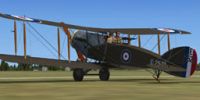
Screenshot of Bristol Fighter F.2B Mk.1 (E2529).
IMPORTANT - This file contains all parts (1-4) of this release. Parts 2 to 4 are optional. Parts 2, 3 must be installed in the correct sequence in order to function correctly.
Other optional files in this release of the Bristol Fighter are [F2BX1Pt3.zip, F2BX1Pt4.zip]
Aircraft included in this file include 4 examples of the Bristol Fighter Mk.1 with long diagonal exhausts and 2 blade propellor. Aircraft depicted include E2601, F4306, E2529 and F4337.
IMPORTANT - This file is part 2 of 4 of this release. Parts 2 to 4 are optional. Parts 2, 3 must be installed in the correct sequence in order to function correctly.
INSTALLATION INSTRUCTIONS - PLEASE READ.
This installation requires the PRIOR working INSTALLATION of the contents of zip F2BX1Pt1.zip in order to function correctly.
Copy this archive file file to a hard drive directory of your choice. You may unzip the contents to your hard drive or if using Windows XP drag the contents of the zip archive to the appropriate directory in your FSX installation.
Drag or copy the folder 'AeroplaneArt_Bristol_F2B_2Blade_Prop' from this download in its entirety, to your ........\Microsoft Flight Simulator X\SimObjects\ folder.
If you have installed part 1 correctly Windows should advise you that this folder already exists and will seek confirmation that it is ok to overwrite. Answer yes and continue.
That's all that is required to install this component of the package.
Please read the enclosed documentation and license agreement.
Notes on the FSX version:
The visual model of this aircraft was originally built for Microsoft Combat Flight Simulator 3. In building the CFS3 F2B the underlying philosophy was to produce a detailed as possible visual model and at the same time achieve the performance level required of a combat flight simulator. The CFS3 version of the F2B was released in March/April 2006 and from feedback received, achieved its original design goal, performing well in the context of the Over Flanders Fields(OFF) CFS3 add-on.
Originally it was intended to produce an all new Bristol F2B for FSX, a more professional offering, later in 2007 or 2008 and make do with a version reworked for FS2004. Work on readying the FS2004 version commenced in October 2006. This coincided with the release of the beta FSX SDK SP1 and it was decided to focus on a FSX version instead, taking advantage of the features offered by the new 3D engine and SDK, using the 3D mesh of the CFS3 model. This provided an ideal vehicle to learn production techniques required of the FSX SDK. The visual models have been reworked somewhat, materials converted to FSX standard, crew figures created, the intricacies of XML part animation learned and as they say..... much more. There are slight changes to the flight model from the CFS3 version.
This aircraft features self shadowing, new FSX material properties such as bump and specular mapping (check out the leather combing in the cockpit), skinned IK animated crew members in the external model. All instruments are built into the 3D model. There are no 2D gauges or instrument panels with this aircraft. There are visual models for differing exhaust and propeller combinations.
From the 'perf' perspective the FSX Bristol F2B is comparable to the FSX stock aircraft and recent commercial releases of other aircraft (Jan 2007).
Note: In this release sounds are aliased to the C172 sounds.
The Aircraft:
The Bristol Fighter evolved from a 1916 design by Captain Barnwell, of the British and Colonial Aircraft Company, based in Bristol. The original design was conceived to meet a requirement for a replacement to the obsolete B.E. aircraft then in service with the RFC. The designation R.2A was applied to the original design which would be powered by a 120-hp Beadmore engine. It was soon realised that the R.2A would be underpowered with the Beardmore engine and the 190-hp Rolls Royce Falcon V12 was installed in the prototype aircraft. This aircraft was designated the Bristol F.2A.
The F.2A was originally supplied to No.48 Squadron RFC during December 1916. The F2.A was deployed to France with No.48 Squadron in March 1917 and first saw action during the Battle of Arras during April 1917. The F2.A's combat debut was somewhat disastrous with the first Bristol Fighter patrol crossing the front lines, being decimated by Albatros D.III's of Manfred Von Richthofen's Jagdstaffel 11. Only two Bristol F2A's from a flight of six survived. This was due to the Bristol Fighter being flown using standard two seater fighter tactics. Tactics were soon modified and the Bristol Fighter achieved success when flown as if it were a single seat fighter with the added bonus of the observer to cover the rear of the aircraft. Changes were made to the basic design and the aircraft was now designated the Bristol F.2B. The first 150 F.2B's were powered by the 190-hp Falcon I engine with the exception of A.7177 in which the first installation of the 275-hp Falcon 111 was made. Another 50 F.2B's were supplied powered by the 220-hp Falcon II engine. All subsequent F.2B's were intended to be powered by the 275-hp Rolls Royce Falcon III engine. Production of the Rolls Royce Falcon was not able to meet demand and other power plants were considered and fitted. However it was primarily the RR Falcon powered Bristol Fighter that equipped RFC/RAF fighter-reconnaissance squadrons in France, achieving success and fame.
The Bristol Fighter F.2B was highly regarded by its crews during WW1 and nicknamed 'Biff'. Post WW1 the Bristol Fighter was nicknamed 'Brisfit' by its crews. The Bristol Fighter continued to be produced after WW1, the final batch being produced in 1926. The Bristol Fighter flew with a number of air forces after WW1. The RAF used the Bristol Fighter until 1932. New Zealand was the last air force to use the Bristol Fighter, scrapping the last Brisfits in 1938.
The version modeled here is a Falcon III powered version.
Known issues:
Force Feedback - when using a Logitec Force 3D pro I notice a twitch on the elevator axis when the aircraft is resting on the runway, even with engine off. This appears to be a possible FSX bug occurring in other aircraft such as the FS2004 Jenny in FSX and appears to be related to aircraft with fixed undercarriage. If this problem occurs deselect Retractable Landing Gear in the forces panel of the settings controls menu.
Flying the 'Biff':
The Bristol Fighter was one of the fastest, if not the fastest diving aircraft, on the Western Front. It was designed to a specification that called for an aircraft which could dive vertically at 400 mph and recover. [Imagine the G's - and the crew - I would question whether such an aircraft could reach these speeds.]. With its 275hp Rolls Royce Falcon III V12 engine it was one of the more powerful aircraft of its era. Accounts of the F2B's handling characteristics depict a powerful, heavy, yet maneuverable fighter, able to give good account for itself against most German single seat fighters of it's time. Modern day pilots of restored Biffs/Brisfits make much mention of the Biff's pleasant flying characteristics, its stability and heaviness of aileron control. The F2B appears to have little in the way of vices save for lack of control harmonisation. The F2B was not renowned for its roll rate but could fly inverted, loop, possibly roll, definitely barrel roll and of course dive at great speed. I pity the poor observer.
With its powerful engine in a shallow dive the FSX Biff easily reaches 140-150mph, and was reported as having reached speeds of 230 mph in vertical dives. At speeds of more than 130 mph aileron control is somewhat limited if not completely ineffective, thus care must be taken in a turning dive as you won't be able to roll until you slow down a bit. Be aware of this aircraft's tendency to yaw adversely... make use of the rudder when turning.
In real life the Biff stalled and spun. Stall recovery was generally easy. The F2B did spin but could loose a fair bit of altitude in the process. The simulated Biff does stall - fairly gently. It will spin and generally recover if the appropriate recovery steps are taken. As in real life this can result in a loss some considerable altitude to achieve and occasionally an unrecoverable spin will occur.
When taking of do not let the tail rise too much as there is a risk that the prop may strike the runway. Also be aware of the Biff's tendency to float on landing... approach at 55mph and touch down at 40mph and make sure the throttle is fully closed.
Reference Material & Thanks:
Windsock Datafile No. 4 - J M Bruce. Albatros Productions, 1987
Windsock Datafile No. 115 - L A Rogers. Albatros Productions, 2006
Windsock Datafile Special #1 & #2 - J M Bruce. Albatros Productions, 1997, 1998.
The Bristol Fighter - Vintage Warbirds No. 4 - J M Bruce, Arms & Armour Press, 1985.
Bristol F2B Fighter King of The Two Seaters - Chaz Bowyer. Ian Allen 1985.
Profile Publications #21 & #237.
Bristol Fighter in Action - D Greer & T Tullis, Squadron Signal Publications, 1993.
Aeroplane magazine Oct & Nov 2006 - 2 part article by David Ogilvy.
Many Thanks also to Dave 'FlyXWire' Schaffner for advice, feedback and information.
Thanks also go to Aces Studio & Microsoft for FSX and all the other great sims along the way, and especially their open architecture policy and SDKs.
DEDICATION:
Dedicated to the memory of Fraser MacIntosh Bruce, 1896-1965 grandfather and ‘Biff’ observer who provided the inspiration to model this wonderful aircraft.
Enjoy!!

Screenshot of Bristol Fighter F.2B Mk.1 (E2601).
The archive f2bx1.zip has 11 files and directories contained within it.
File Contents
This list displays the first 500 files in the package. If the package has more, you will need to download it to view them.
| Filename/Directory | File Date | File Size |
|---|---|---|
| F2BX1pt1.zip | 09.13.12 | 22.04 MB |
| __MACOSX | 09.13.12 | 0 B |
| f2bx1pt2.zip | 09.13.12 | 19.63 MB |
| f2bx1pt3.zip | 09.13.12 | 15.04 MB |
| f2bx1pt4.zip | 09.13.12 | 17.22 MB |
| flyawaysimulation.txt | 10.29.13 | 959 B |
| Go to Fly Away Simulation.url | 01.22.16 | 52 B |
Installation Instructions
Most of the freeware add-on aircraft and scenery packages in our file library come with easy installation instructions which you can read above in the file description. For further installation help, please see our Flight School for our full range of tutorials or view the README file contained within the download. If in doubt, you may also ask a question or view existing answers in our dedicated Q&A forum.




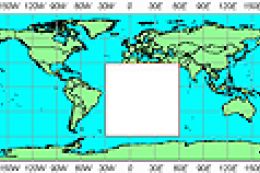
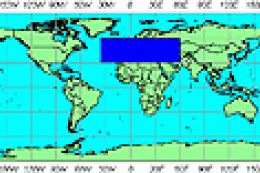


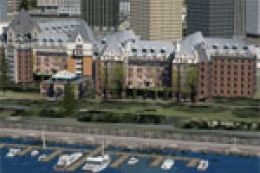
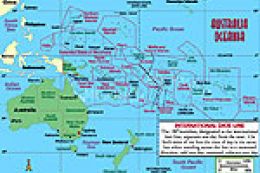
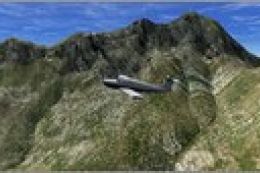
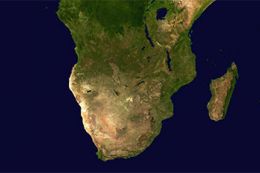
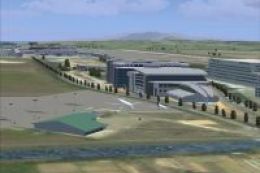
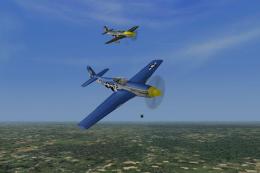
0 comments
Leave a Response